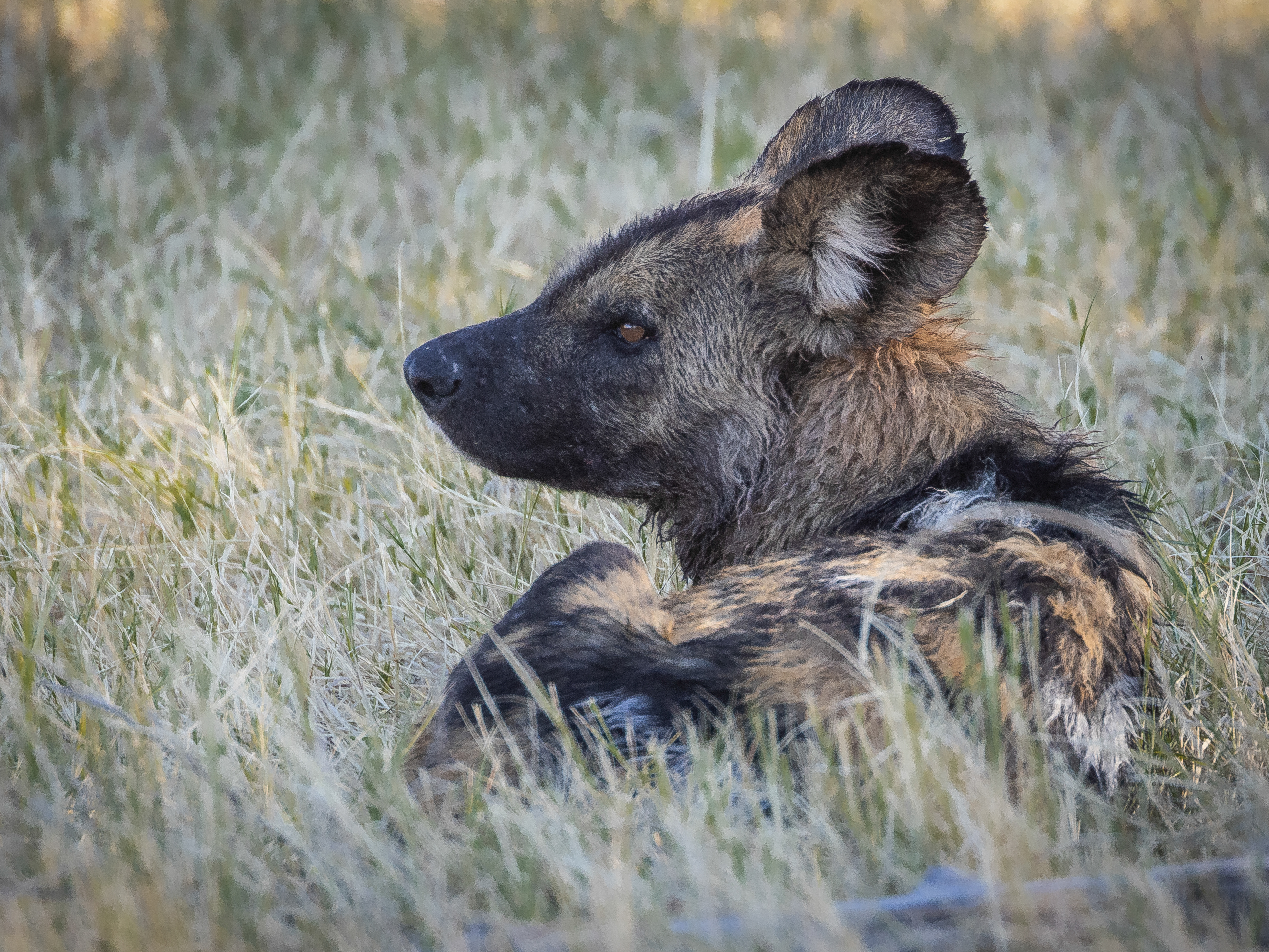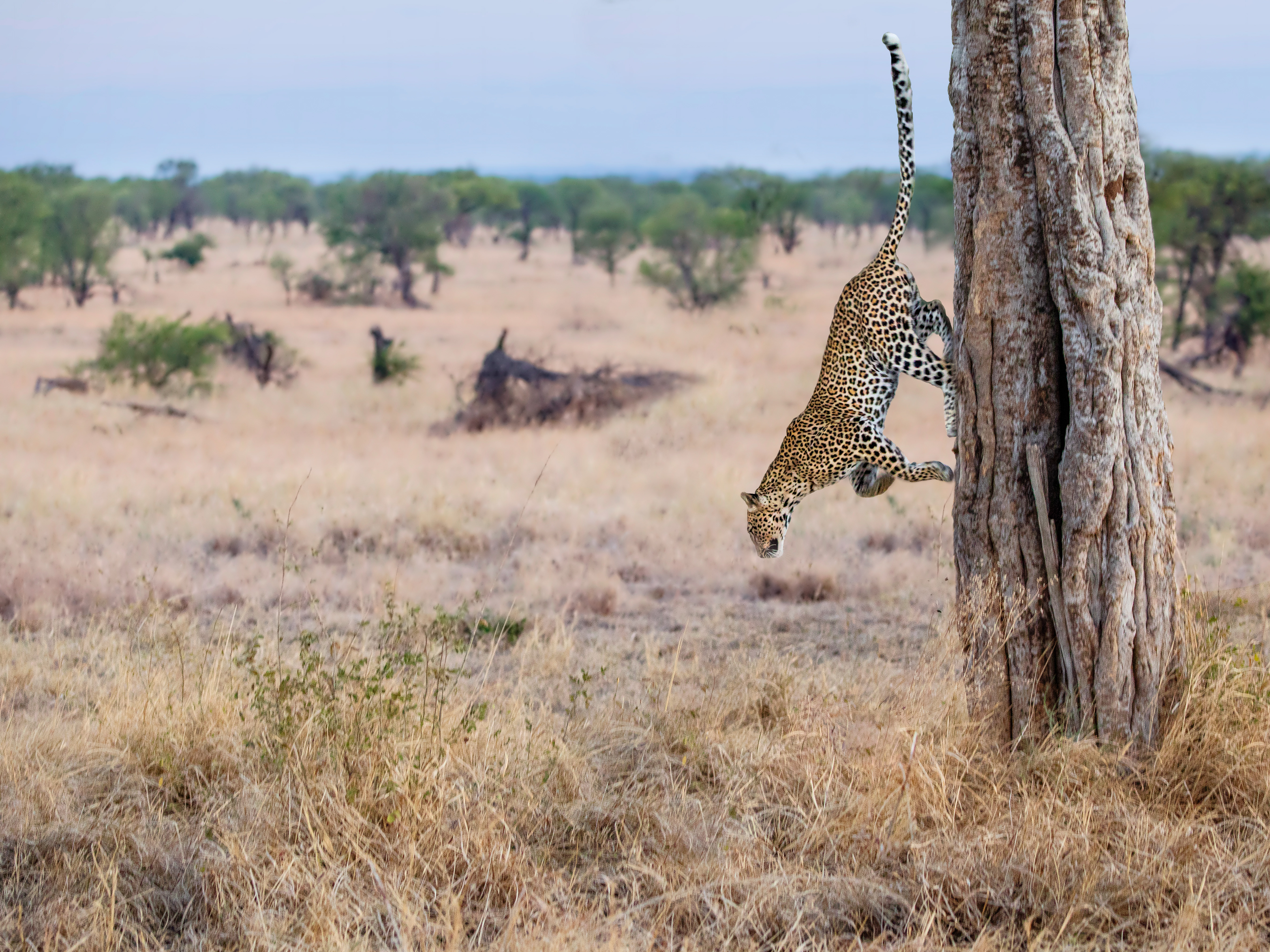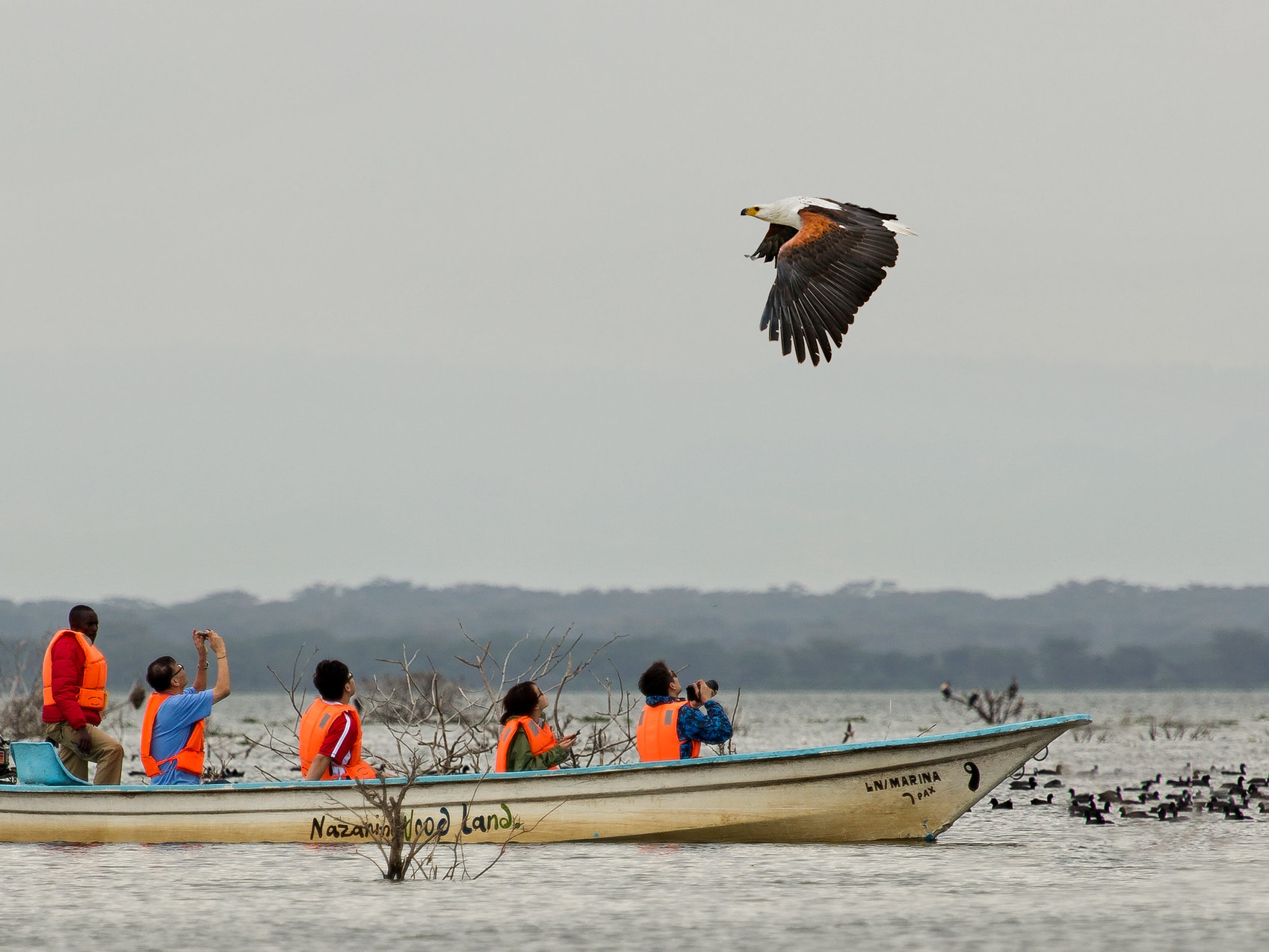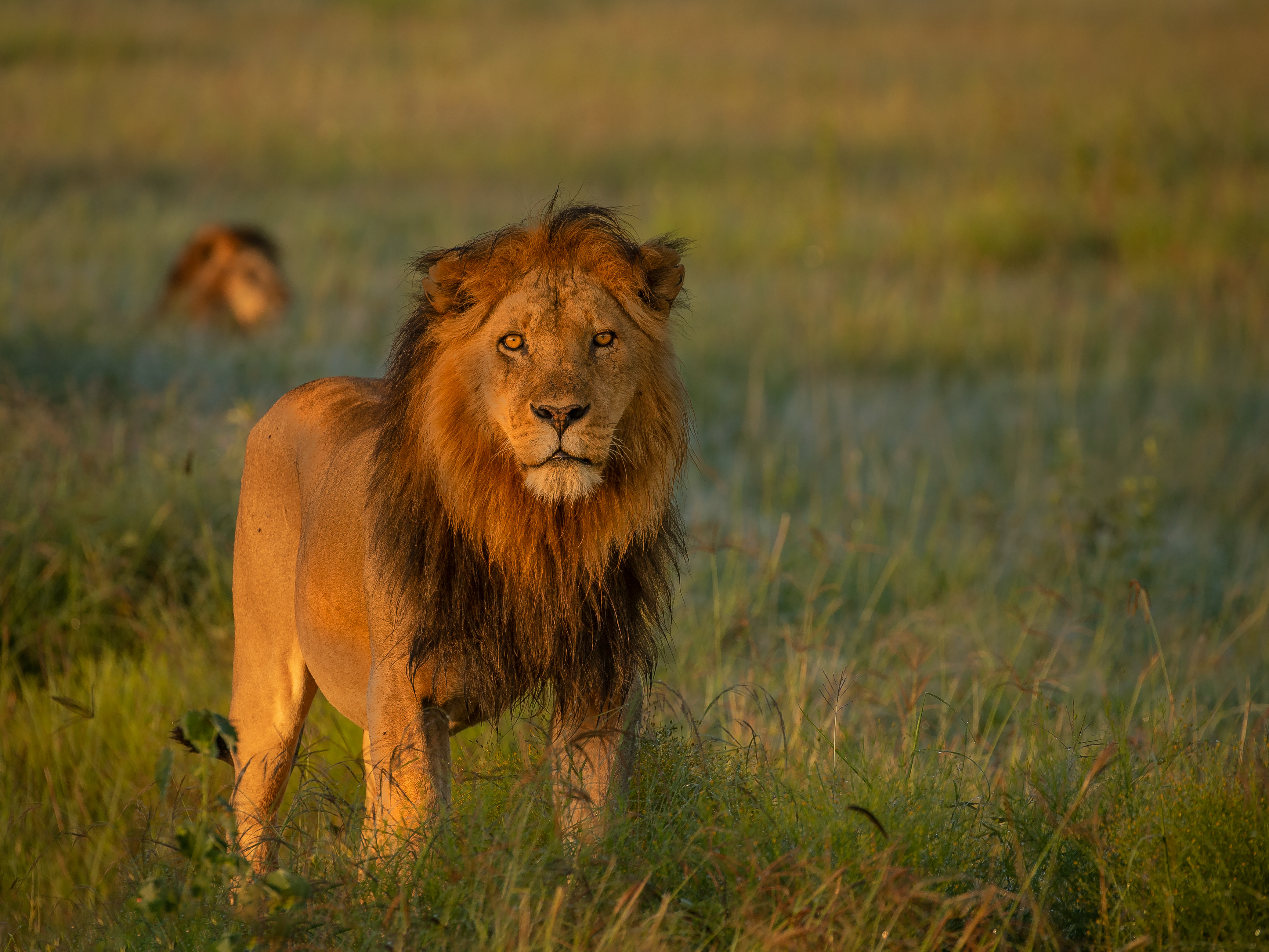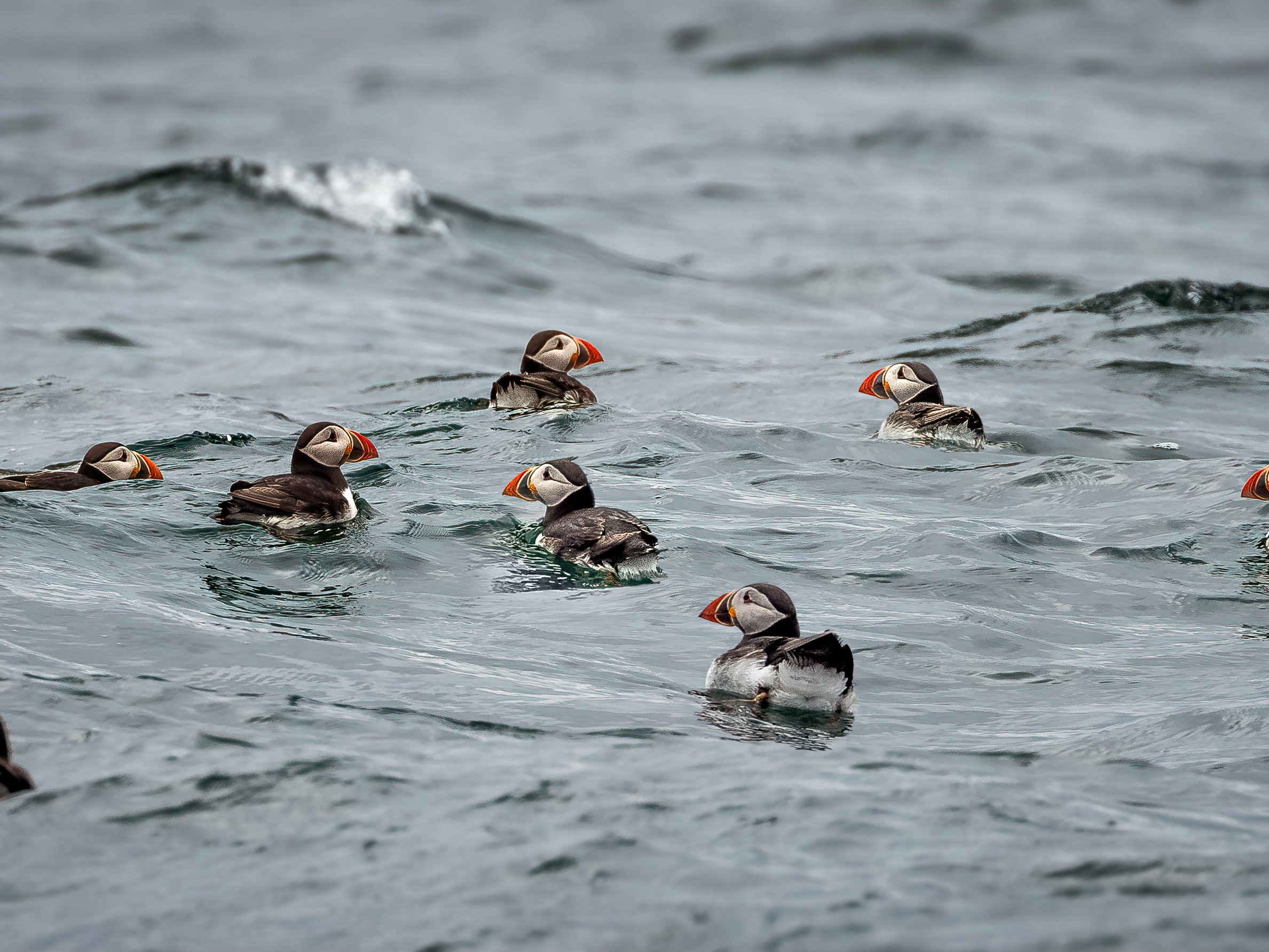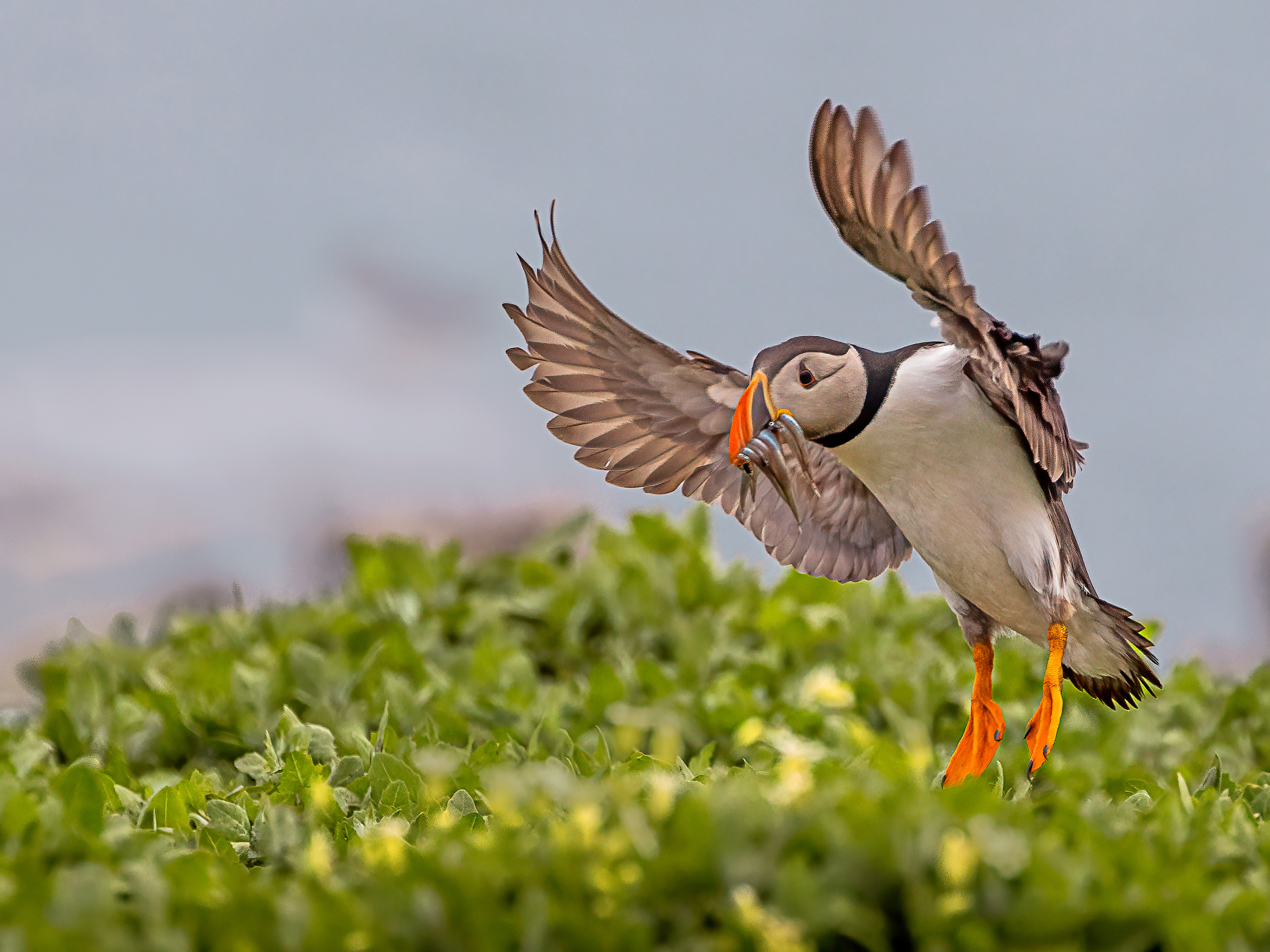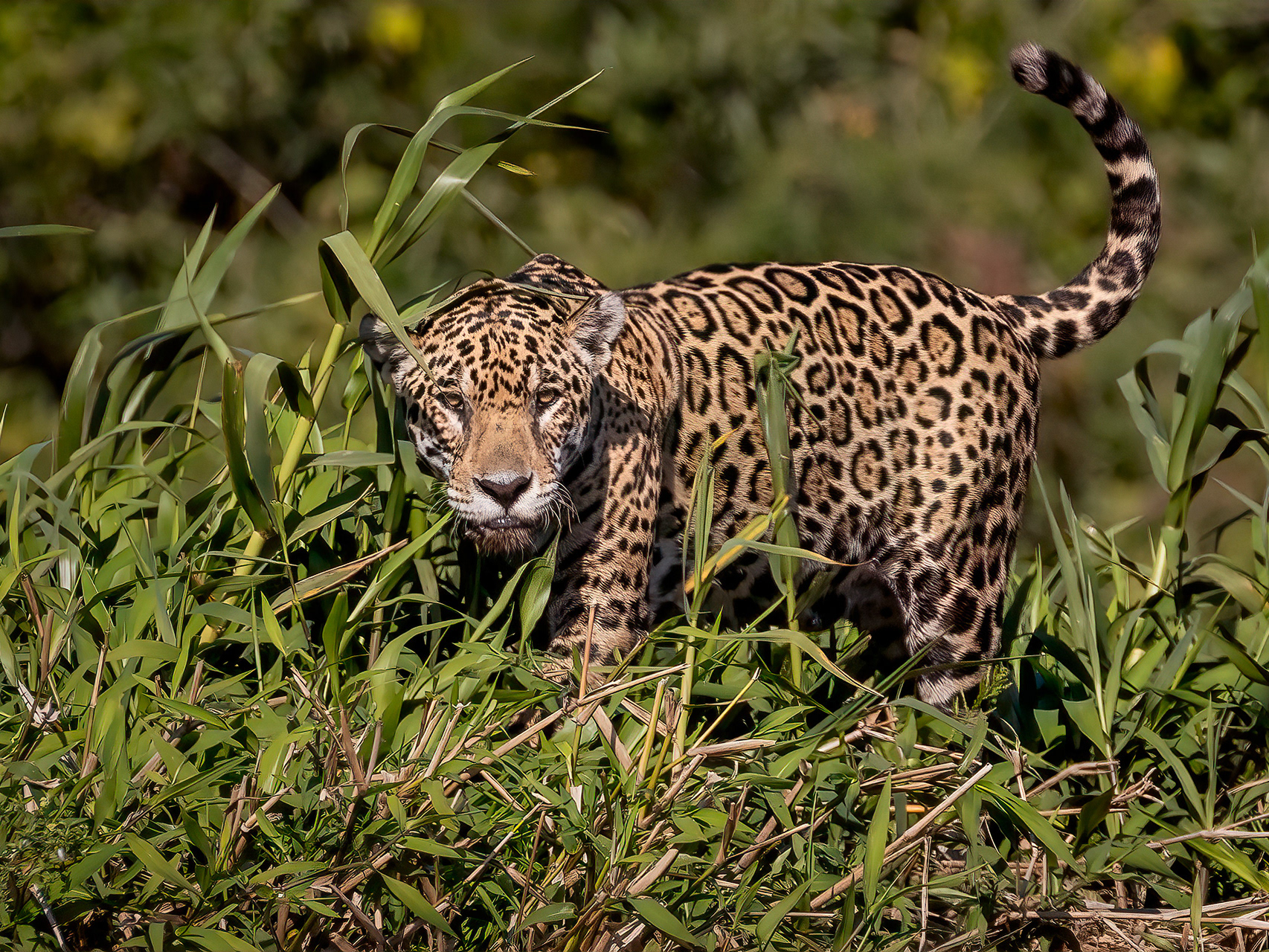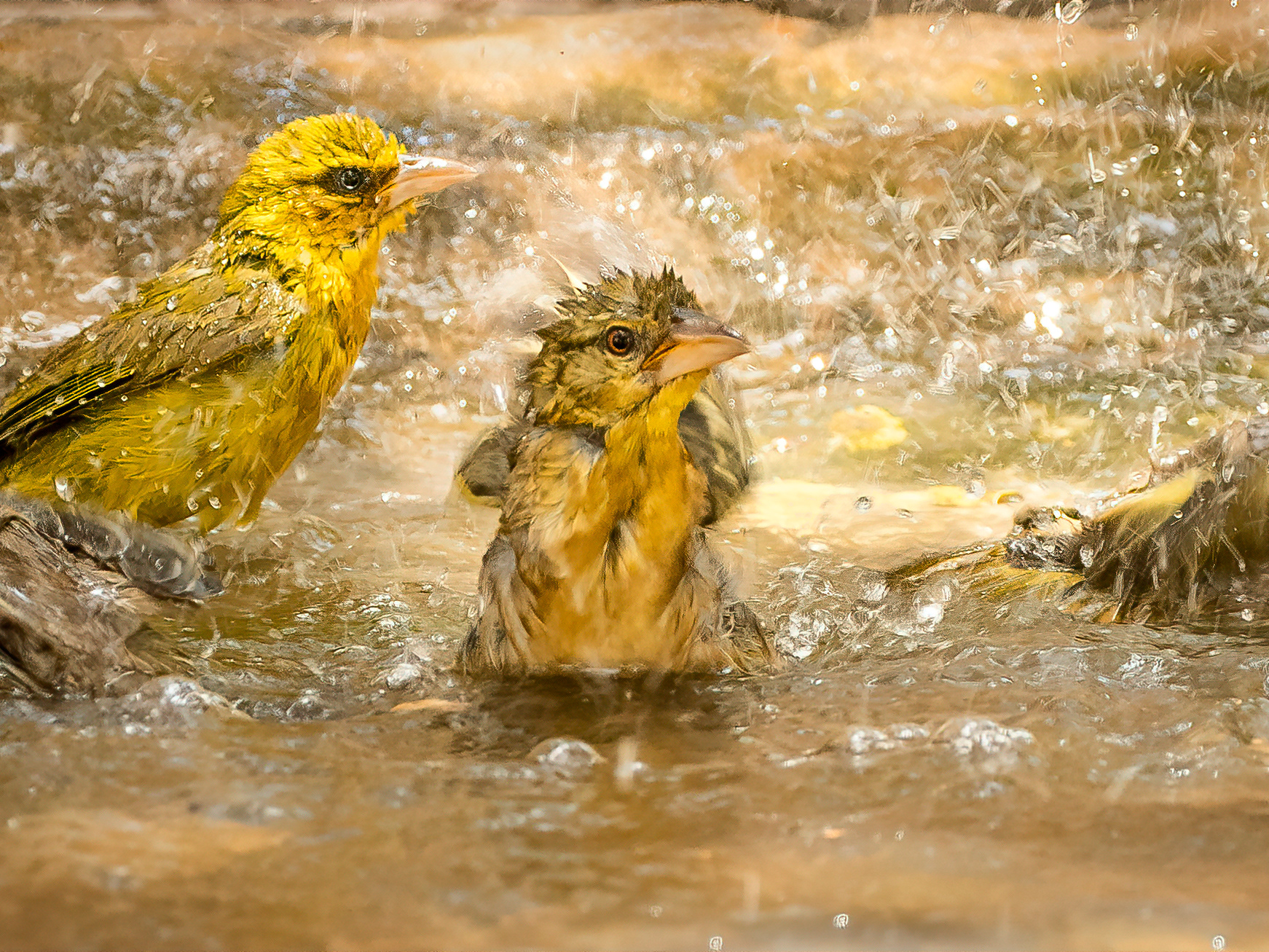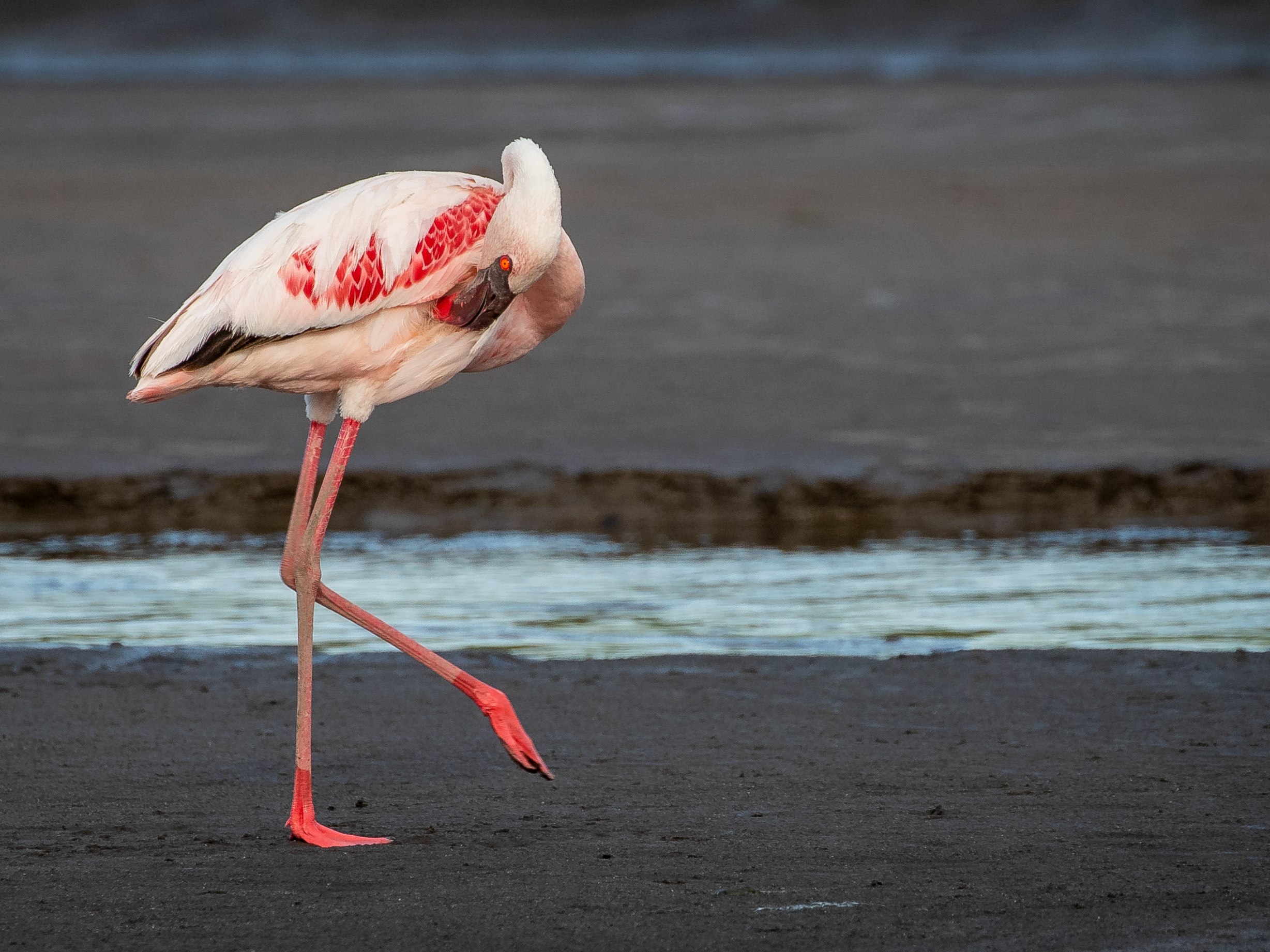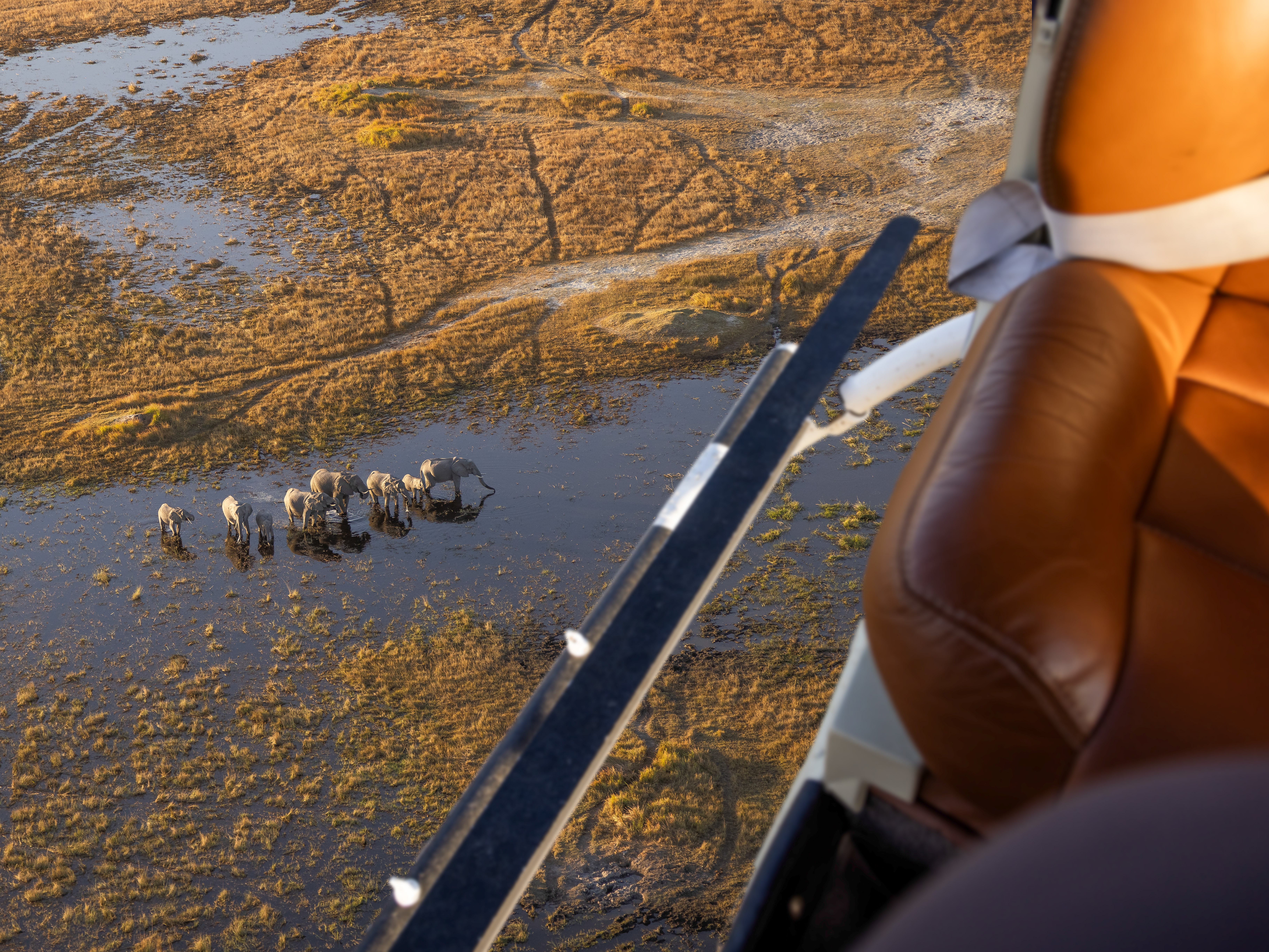Ngorongoro Crater from above. The drive up from the plateau below invariably takes you through thick mist, to be presented with this view when you reach the top. I will never tire of seeing this.
Elephant
When I first saw this elephant I thought he was a statue, he was so still. It turns out he was asleep, standing up! Elephants can live to around 65 years old, and this huge male was somewhere between 40 and 50 years old.
He's a “left-tusker” - like humans are left or right-handed, elephants have a predominant tusk, which is shown as being shorter through constant use.
Ngorongoro Crater is known for its huge, lone, male elephants. Nearly all the elephants within the crater are old males – there are no breeding herds or females here, as they rely on tree cover for security when giving birth and while the babies are young. You do get the occasional young male entering though.
A hippo heading for the waterhole. It is rare to see hippo out on land during the day. They spend most of the day submerged in water with only their head sticking out, preferring to leave the water at night to graze on land. While they are herbivores, they can be quite aggressive, especially if they have young. Hippos kill more people in Africa than any other animal (except the mosquito). Never get between a hippo and the water.
Most of the time you are only likely to see the Black Rhino from a distance but in 2017 we were lucky enough to have two of them walk right by the car.
Crested Lark
This heavily pregnant lioness was looking for some shelter where she could safely have her babies. She was too heavy to chase some antelopes that passed dangerously close to her.
Olive Baboon
Male Ostrich displaying his breeding plumage. The male birds have a harem of females, up to 15 or more. The females then look after the chicks collectively.
Sacred Ibis
Cape Buffalo
During the wet season, the floor of the crater explodes into a riot of colour. This image was taken in May 2017.
Zebra fighting
Close up of a Wattled Starling showing the breeding plumage of the male.
Black Backed Jackal
Grey Crowned Crane engaged in courtship ritual
Elephant
Little Bee Eater
Spotted Hyena
Close-up of a Village Weaver which landed on the roof of our car as we stopped for a picnic.
Close-up of Zebra
African Spoonbill
Unpredictable and highly dangerous, Cape Buffalo has the most impressive horns. They reportedly charge thousands of people a year and gore over 200. They can attack and cause serious injury with the tips of their huge, curved horns, or by head butting with their "boss" which is the solid shield of horn that covers the skull where the horns emerge.
Lioness in the crater
Lesser Flamingo at Lake Magadi
Kori Bustard
Warthog - the sort of face only a mother could love
Wildebeest
An adorable Zebra foal, less than a week old.
Augur Buzzard
An elephant appears from Lerai Forest, such a magical moment as he crossed the road in front of us.
Three-week old lion cubs suckling - cuteness overload
I love the look on this young Olive Baboon's dace - he looks so human.
Grey Crowned Crane with chicks
A young Thomson's Gazelle
A Secretary Bird peers at us from her nest at the top of an acacia tree
Common Fiscal Shrike
Eland - Tanzania's biggest antelope
Having a car picnic downwind from a pond full of 50+ hippos was not our best decision.
Northern Anteater Chat
Rufous Tailed Weaver
The Cape Buffalo has an unnerving stare
Golden Jackal
This is one of the many reasons I love to travel in the Green Season - even the elephants decorate themselves with flowers
Black Headed Heron
Grey Crowned Crane
It is always a pleasure to see lion cubs
With their mums for a tender moment
Not forgetting their goofy dad!
Sacred Ibis
A standoff between two Wildebeest over a female on heat
Yellow-Billed Oxpeckers on a Buffalo
The Warthog may have an ugly face, but look at those elegant legs! It looks like she is wearing stilettos!
Yellow Billed Kite
Southern Masked Weaver sitting on the door of our van as we are having a picnic, hoping we will drop a crumb on the floor
And the chick looking up at us from the ground with big, begging eyes
The curious-looking Hammerkop
And equally odd Helmeted Guineafowl
